Seasonal Variability in Chlorophyll and Air-Sea CO2 Flux in the Sri Lanka Dome: Hydrodynamic Implications
Abstract
:1. Introduction
2. Data and Methods
2.1. Datasets
2.2. Lagrangian Particle Tracking
2.3. Front Detection
2.4. Remote Sensing of Sea-to-Air CO2 Flux
3. Results
3.1. Chlorophyll
3.2. Wind Stress Curl
3.3. Sea Surface Height
3.4. Eddy Distribution
3.5. Frontal Probability
3.6. Sea-to-Air CO2 Flux
4. Discussion
4.1. Lateral Advection from the SSL to the SLD
4.2. Impact of Sea Surface Height, Eddy, and Front on the Chlorophyll
4.3. Dynamics of the Air–Sea CO2 Flux
5. Conclusions
Supplementary Materials
Author Contributions
Funding
Data Availability Statement
Acknowledgments
Conflicts of Interest
Abbreviations
| ACE | Anticyclonic eddy |
| BoB | Bay of Bengal |
| BoBBLE | Bay of Bengal Boundary Layer Experiment |
| CE | Cyclonic eddy |
| DCM | Deep chlorophyll maxima |
| NPP | Net primary productivity |
| MLD | Mixed layer depth |
| Ocean Color CCI | Ocean Colour Climate Change Initiative |
| Rrs | Remote-sensing reflectance |
| SCS | South China Sea |
| SLD | Sri Lanka dome |
| SMC | Southwest monsoon current |
| SSHA | Sea surface height anomaly |
| SSS | Sea surface salinity |
| SST | Sea surface temperature |
References
- Schott, F.A.; McCreary, J.P. The monsoon circulation of the Indian Ocean. Prog. Oceanogr. 2001, 51, 1–123. [Google Scholar] [CrossRef]
- Thapliyal, V.; Rajeevan, M. MONSOON|Prediction. In Encyclopedia of Atmospheric Sciences; Holton, J.R., Ed.; Academic Press: Oxford, UK, 2003; pp. 1391–1400. [Google Scholar] [CrossRef]
- Vinayachandran, P.N.M.; Masumoto, Y.; Roberts, M.J.; Huggett, J.A.; Halo, I.; Chatterjee, A.; Amol, P.; Gupta, G.V.M.; Singh, A.; Mukherjee, A.; et al. Reviews and syntheses: Physical and biogeochemical processes associated with upwelling in the Indian Ocean. Biogeosciences 2021, 18, 5967–6029. [Google Scholar] [CrossRef]
- Li, Y.; Qiu, Y.; Hu, J.; Aung, C.; Lin, X.; Dong, Y. Springtime Upwelling and Its Formation Mechanism in Coastal Waters of Manaung Island, Myanmar. Remote Sens. 2020, 12, 3777. [Google Scholar] [CrossRef]
- Vic, C.; Capet, X.; Roullet, G.; Carton, X. Western boundary upwelling dynamics off Oman. Ocean. Dyn. 2017, 67, 585–595. [Google Scholar] [CrossRef] [Green Version]
- Elliott, A.J.; Savidge, G. Some features of the upwelling off Oman. J. Mar. Res. 1990, 48, 319–333. [Google Scholar] [CrossRef]
- Lighthill, M.J. Dynamic response of the Indian Ocean to onset of the Southwest Monsoon. Philos. Trans. R. Soc. London. Ser. A Math. Phys. Sci. 1969, 265, 45–92. [Google Scholar] [CrossRef]
- Chatterjee, A.; Kumar, B.P.; Prakash, S.; Singh, P. Annihilation of the Somali upwelling system during summer monsoon. Sci. Rep. 2019, 9, 7598. [Google Scholar] [CrossRef]
- McCreary, J.P.; Kundu, P.K.; Molinari, R.L. A numerical investigation of dynamics, thermodynamics and mixed-layer processes in the Indian Ocean. Prog. Oceanogr. 1993, 31, 181–244. [Google Scholar] [CrossRef]
- Shah, P.; Sajeev, R.; Gopika, N. Study of Upwelling along the West Coast of India—A Climatological Approach. J. Coast. Res. 2015, 31, 1151–1158. [Google Scholar] [CrossRef]
- Rao, A.D.; Joshi, M.; Ravichandran, M. Oceanic upwelling and downwelling processes in waters off the west coast of India. Ocean. Dyn. 2008, 58, 213–226. [Google Scholar] [CrossRef]
- Xu, T.; Wei, Z.; Li, S.; Susanto, R.D.; Radiarta, N.; Yuan, C.; Setiawan, A.; Kuswardani, A.; Agustiadi, T.; Trenggono, M. Satellite-Observed Multi-Scale Variability of Sea Surface Chlorophyll-a Concentration along the South Coast of the Sumatra-Java Islands. Remote Sens. 2021, 13, 2817. [Google Scholar] [CrossRef]
- Susanto, R.D.; Gordon, A.L.; Zheng, Q. Upwelling along the coasts of Java and Sumatra and its relation to ENSO. Geophys. Res. Lett. 2001, 28, 1599–1602. [Google Scholar] [CrossRef]
- Narvekar, J.; Roy Chowdhury, R.; Gaonkar, D.; Kumar, P.K.D.; Prasanna Kumar, S. Observational evidence of stratification control of upwelling and pelagic fishery in the eastern Arabian Sea. Sci. Rep. 2021, 11, 7293. [Google Scholar] [CrossRef] [PubMed]
- Madhupratap, M.; Nair, K.N.V.; Gopalakrishnan, T.C.; Haridas, P.; Nair, K.K.C.; Venugopal, P.; Gauns, M. Arabian Sea oceanography and fisheries of the west coast of India. Curr. Sci. 2001, 81, 355–361. [Google Scholar]
- Vinayachandran, P.N.; Yamagata, T. Monsoon Response of the Sea around Sri Lanka: Generation of Thermal Domesand Anticyclonic Vortices. J. Phys. Oceanogr. 1998, 28, 1946–1960. [Google Scholar] [CrossRef]
- De Vos, A.; Pattiaratchi, C.B.; Wijeratne, E.M.S. Surface circulation and upwelling patterns around Sri Lanka. Biogeosciences 2014, 11, 5909–5930. [Google Scholar] [CrossRef] [Green Version]
- Burns, J.M.; Subrahmanyam, B.; Murty, V.S.N. On the dynamics of the Sri Lanka Dome in the Bay of Bengal. J. Geophys. Res. Oceans 2017, 122, 7737–7750. [Google Scholar] [CrossRef]
- Vinayachandran, P.N.; Masumoto, Y.; Mikawa, T.; Yamagata, T. Intrusion of the Southwest Monsoon Current into the Bay of Bengal. J. Geophys. Res. Oceans 1999, 104, 11077–11085. [Google Scholar] [CrossRef]
- Su, D.; Wijeratne, S.; Pattiaratchi, C.B. Monsoon Influence on the Island Mass Effect around the Maldives and Sri Lanka. Front. Mar. Sci. 2021, 8, 645672. [Google Scholar] [CrossRef]
- Doty, M.S.; Oguri, M. The Island Mass Effect. ICES J. Mar. Sci. 1956, 22, 33–37. [Google Scholar] [CrossRef]
- Pramanik, S.; Sil, S.; Gangopadhyay, A.; Singh, M.K.; Behera, N. Interannual variability of the Chlorophyll-a concentration over Sri Lankan Dome in the Bay of Bengal. Int. J. Remote Sens. 2020, 41, 5974–5991. [Google Scholar] [CrossRef]
- Phillips, H.E.; Tandon, A.; Furue, R.; Hood, R.; Ummenhofer, C.C.; Benthuysen, J.A.; Menezes, V.; Hu, S.; Webber, B.; Sanchez-Franks, A.; et al. Progress in understanding of Indian Ocean circulation, variability, air-sea exchange, and impacts on biogeochemistry. Ocean Sci. 2021, 17, 1677–1751. [Google Scholar] [CrossRef]
- Vinayachandran, P.N.; Chauhan, P.; Mohan, M.; Nayak, S. Biological response of the sea around Sri Lanka to summer monsoon. Geophys. Res. Lett. 2004, 31. [Google Scholar] [CrossRef]
- Roy, R.; Vinayachandran, P.N.; Sarkar, A.; George, J.; Parida, C.; Lotliker, A.; Prakash, S.; Choudhury, S.B. Southern Bay of Bengal: A possible hotspot for CO2 emission during the summer monsoon. Prog. Oceanogr. 2021, 197, 102638. [Google Scholar] [CrossRef]
- Chakraborty, K.; Valsala, V.; Gupta, G.V.M.; Sarma, V.V.S.S. Dominant Biological Control over Upwelling on pCO2 in Sea East of Sri Lanka. J. Geophys. Res. Biogeosci. 2018, 123, 3250–3261. [Google Scholar] [CrossRef]
- Lévy, M.; Shankar, D.; André, J.M.; Shenoi, S.S.C.; Durand, F.; de Boyer Montégut, C. Basin-wide seasonal evolution of the Indian Ocean’s phytoplankton blooms. J. Geophys. Res. Ocean. 2007, 112. [Google Scholar] [CrossRef] [Green Version]
- Yuan, X.; Salama, M.S.; Su, Z. An Observational Perspective of Sea Surface Salinity in the Southwestern Indian Ocean and Its Role in the South Asia Summer Monsoon. Remote Sens. 2018, 10, 1930. [Google Scholar] [CrossRef] [Green Version]
- Vinayachandran, P.N.; Matthews, A.J.; Kumar, K.V.; Sanchez-Franks, A.; Thushara, V.; George, J.; Vijith, V.; Webber, B.G.M.; Queste, B.Y.; Roy, R.; et al. BoBBLE: Ocean–Atmosphere Interaction and Its Impact on the South Asian Monsoon. Bull. Am. Meteorol. Soc. 2018, 99, 1569–1587. [Google Scholar] [CrossRef] [Green Version]
- Thushara, V.; Vinayachandran, P.N.M.; Matthews, A.J.; Webber, B.G.M.; Queste, B.Y. Vertical distribution of chlorophyll in dynamically distinct regions of the southern Bay of Bengal. Biogeosciences 2019, 16, 1447–1468. [Google Scholar] [CrossRef] [Green Version]
- Xu, Y.; Wu, Y.; Wang, H.; Zhang, Z.; Li, J.; Zhang, J. Seasonal and interannual variabilities of chlorophyll across the eastern equatorial Indian Ocean and Bay of Bengal. Prog. Oceanogr. 2021, 198, 102661. [Google Scholar] [CrossRef]
- Sharada, M.K.; Swathi, P.S.; Yajnik, K.S.; Kalyani Devasena, C. Role of biology in the air-sea carbon flux in the Bay of Bengal and Arabian Sea. J. Earth Syst. Sci. 2008, 117, 429–447. [Google Scholar] [CrossRef] [Green Version]
- Laruelle, G.G.; Lauerwald, R.; Pfeil, B.; Regnier, P. Regionalized global budget of the CO2 exchange at the air-water interface in continental shelf seas. Glob. Biogeochem. Cycles 2014, 28, 1199–1214. [Google Scholar] [CrossRef]
- Bai, Y.; Cai, W.-J.; He, X.; Zhai, W.; Pan, D.; Dai, M.; Yu, P. A mechanistic semi-analytical method for remotely sensing sea surface pCO2 in river-dominated coastal oceans: A case study from the East China Sea. J. Geophys. Res. Oceans 2015, 120, 2331–2349. [Google Scholar] [CrossRef]
- Chen, S.; Sutton, A.J.; Hu, C.; Chai, F. Quantifying the Atmospheric CO2 Forcing Effect on Surface Ocean pCO2 in the North Pacific Subtropical Gyre in the Past Two Decades. Front. Mar. Sci. 2021, 8, 636881. [Google Scholar] [CrossRef]
- Le, C.; Gao, Y.; Cai, W.-J.; Lehrter, J.C.; Bai, Y.; Jiang, Z.-P. Estimating summer sea surface pCO2 on a river-dominated continental shelf using a satellite-based semi-mechanistic model. Remote Sens. Environ. 2019, 225, 115–126. [Google Scholar] [CrossRef]
- Parard, G.; Charantonis, A.A.; Rutgerson, A. Remote sensing the sea surface CO2 of the Baltic Sea using the SOMLO methodology. Biogeosciences 2015, 12, 3369–3384. [Google Scholar] [CrossRef] [Green Version]
- Sathyendranath, S.; Brewin, R.J.W.; Brockmann, C.; Brotas, V.; Calton, B.; Chuprin, A.; Cipollini, P.; Couto, A.B.; Dingle, J.; Doerffer, R.; et al. An Ocean-Colour Time Series for Use in Climate Studies: The Experience of the Ocean-Colour Climate Change Initiative (OC-CCI). Sensors 2019, 19, 4285. [Google Scholar] [CrossRef] [Green Version]
- Wang, Y.; Castelao, R.M.; Yuan, Y. Seasonal variability of alongshore winds and sea surface temperature fronts in Eastern Boundary Current Systems. J. Geophys. Res. Oceans 2015, 120, 2385–2400. [Google Scholar] [CrossRef]
- Ma, W.; Xiu, P.; Chai, F.; Ran, L.; Wiesner, M.G.; Xi, J.; Yan, Y.; Fredj, E. Impact of mesoscale eddies on the source funnel of sediment trap measurements in the South China Sea. Prog. Oceanogr. 2021, 194, 102566. [Google Scholar] [CrossRef]
- Wang, Y.; Ma, W.; Zhou, F.; Chai, F. Frontal variability and its impact on chlorophyll in the Arabian Sea. J. Mar. Syst. 2021, 218, 103545. [Google Scholar] [CrossRef]
- Grinsted, A.; Moore, J.C.; Jevrejeva, S. Application of the cross wavelet transform and wavelet coherence to geophysical time series. Nonlinear Processes Geophys. 2004, 11, 561–566. [Google Scholar] [CrossRef]
- Bakker, D.C.E.; Pfeil, B.; Landa, C.S.; Metzl, N.; O’Brien, K.M.; Olsen, A.; Smith, K.; Cosca, C.; Harasawa, S.; Jones, S.D.; et al. A multi-decade record of high-quality fCO2 data in version 3 of the Surface Ocean CO2 Atlas (SOCAT). Earth Syst. Sci. Data 2016, 8, 383–413. [Google Scholar] [CrossRef] [Green Version]
- Kraus, E.B.; Businger, J.A. Atmosphere-Ocean Interaction; Oxford University Press: Oxford, UK, 1994. [Google Scholar]
- Mears, C.A.; Scott, J.; Wentz, F.J.; Ricciardulli, L.; Leidner, S.M.; Hoffman, R.; Atlas, R. A Near-Real-Time Version of the Cross-Calibrated Multiplatform (CCMP) Ocean Surface Wind Velocity Data Set. J. Geophys. Res. Oceans 2019, 124, 6997–7010. [Google Scholar] [CrossRef]
- Cullen, K.E.; Shroyer, E.L. Seasonality and interannual variability of the Sri Lanka dome. Deep. Sea Res. Part II Top. Stud. Oceanogr. 2019, 168, 104642. [Google Scholar] [CrossRef]
- Chen, Y.; Shi, H.; Zhao, H. Summer Phytoplankton Blooms Induced by Upwelling in the Western South China Sea. Front. Mar. Sci. 2021, 8, 740130. [Google Scholar] [CrossRef]
- Narayanan Nampoothiri, S.V.; Ramu, C.V.; Rasheed, K.; Sarma, Y.V.B.; Gupta, G.V.M. Observational evidence on the coastal upwelling along the northwest coast of India during summer monsoon. Environ. Monit. Assess. 2021, 194, 5. [Google Scholar] [CrossRef]
- Narayanan Nampoothiri, S.V.; Sachin, T.S.; Rasheed, K. Dynamics and forcing mechanisms of upwelling along the south eastern Arabian sea during south west monsoon. Reg. Stud. Mar. Sci. 2020, 40, 101519. [Google Scholar] [CrossRef]
- Yang, X.; Xu, G.; Liu, Y.; Sun, W.; Xia, C.; Dong, C. Multi-Source Data Analysis of Mesoscale Eddies and Their Effects on Surface Chlorophyll in the Bay of Bengal. Remote Sens. 2020, 12, 3485. [Google Scholar] [CrossRef]
- Gaube, P.; McGillicuddy, D.J., Jr.; Chelton, D.B.; Behrenfeld, M.J.; Strutton, P.G. Regional variations in the influence of mesoscale eddies on near-surface chlorophyll. J. Geophys. Res. Oceans 2014, 119, 8195–8220. [Google Scholar] [CrossRef] [Green Version]
- Fay, A.R.; Gregor, L.; Landschützer, P.; McKinley, G.A.; Gruber, N.; Gehlen, M.; Iida, Y.; Laruelle, G.G.; Rödenbeck, C.; Roobaert, A.; et al. SeaFlux: Harmonization of air-sea CO2 fluxes from surface pCO2 data products using a standardized approach. Earth Syst. Sci. Data 2021, 13, 4693–4710. [Google Scholar] [CrossRef]
- Takahashi, T.; Sutherland, S.C.; Wanninkhof, R.; Sweeney, C.; Feely, R.A.; Chipman, D.W.; Hales, B.; Friederich, G.; Chavez, F.; Sabine, C.; et al. Climatological mean and decadal change in surface ocean pCO2, and net sea-air CO2 flux over the global oceans. Deep. Sea Res. Part II Top. Stud. Oceanogr. 2009, 56, 554–577. [Google Scholar] [CrossRef]
- Lu, W.; Oey, L.Y.; Liao, E.; Zhuang, W.; Yan, X.H.; Jiang, Y. Physical modulation to the biological productivity in the summer Vietnam upwelling system. Ocean Sci. 2018, 14, 1303–1320. [Google Scholar] [CrossRef] [Green Version]
- Liang, W.; Tang, D.; Luo, X. Phytoplankton size structure in the western South China Sea under the influence of a ‘jet-eddy system’. J. Mar. Syst. 2018, 187, 82–95. [Google Scholar] [CrossRef]
- Messié, M.; Petrenko, A.; Doglioli, A.M.; Aldebert, C.; Martinez, E.; Koenig, G.; Bonnet, S.; Moutin, T. The Delayed Island Mass Effect: How Islands can Remotely Trigger Blooms in the Oligotrophic Ocean. Geophys. Res. Lett. 2020, 47, e2019GL085282. [Google Scholar] [CrossRef] [Green Version]
- Trombetta, T.; Vidussi, F.; Mas, S.; Parin, D.; Simier, M.; Mostajir, B. Water temperature drives phytoplankton blooms in coastal waters. PLoS ONE 2019, 14, e0214933. [Google Scholar] [CrossRef] [PubMed] [Green Version]
- Van Oostende, N.; Dunne, J.P.; Fawcett, S.E.; Ward, B.B. Phytoplankton succession explains size-partitioning of new production following upwelling-induced blooms. J. Mar. Syst. 2015, 148, 14–25. [Google Scholar] [CrossRef]
- Huang, H.; Wang, D.; Yang, L.; Huang, K. Enhanced Intraseasonal Variability of the Upper Layers in the Southern Bay of Bengal During the Summer 2016. J. Geophys. Res. Oceans 2021, 126, e2021JC017459. [Google Scholar] [CrossRef]
- Cheng, X.; McCreary, J.P.; Qiu, B.; Qi, Y.; Du, Y. Intraseasonal-to-semiannual variability of sea-surface height in the astern, equatorial Indian Ocean and southern Bay of Bengal. J. Geophys. Res. Oceans 2017, 122, 4051–4067. [Google Scholar] [CrossRef]
- Wang, G.; Chen, D.; Su, J. Generation and life cycle of the dipole in the South China Sea summer circulation. J. Geophys. Res. Oceans 2006, 111, C06002. [Google Scholar] [CrossRef] [Green Version]
- Ni, Q.; Zhai, X.; Wang, G.; Hughes, C.W. Widespread Mesoscale Dipoles in the Global Ocean. J. Geophys. Res. Oceans 2020, 125, e2020JC016479. [Google Scholar] [CrossRef]
- Pirro, A.; Fernando, H.J.S.; Wijesekera, H.W.; Jensen, T.G.; Centurioni, L.R.; Jinadasa, S.U.P. Eddies and currents in the Bay of Bengal during summer monsoons. Deep. Sea Res. Part II Top. Stud. Oceanogr. 2020, 172, 104728. [Google Scholar] [CrossRef]
- Webber, B.G.M.; Matthews, A.J.; Vinayachandran, P.N.; Neema, C.P.; Sanchez-Franks, A.; Vijith, V.; Amol, P.; Baranowski, D.B. The Dynamics of the Southwest Monsoon Current in 2016 from High-Resolution in Situ Observations and Models. J. Phys. Oceanogr. 2018, 48, 2259–2282. [Google Scholar] [CrossRef]
- Yu, Y.; Wang, Y.; Cao, L.; Tang, R.; Chai, F. The ocean-atmosphere interaction over a summer upwelling system in the South China Sea. J. Mar. Syst. 2020, 208, 103360. [Google Scholar] [CrossRef]
- Jinadasa, S.U.P.; Lozovatsky, I.; Planella-Morató, J.; Nash, J.; MacKinnon, J.; Lucas, A.; Wijesekera, H.; Fernando, H. Ocean Turbulence and Mixing Around Sri Lanka and in Adjacent Waters of the Northern Bay of Bengal. Oceanography 2016, 29, 170–179. [Google Scholar] [CrossRef] [Green Version]
- Li, Y.; Qiu, Y.; Hu, J.; Aung, C.; Lin, X.; Jing, C.; Zhang, J. The Strong Upwelling Event off the Southern Coast of Sri Lanka in 2013 and Its Relationship with Indian Ocean Dipole Events. J. Climate 2021, 34, 3555–3569. [Google Scholar] [CrossRef]
- Enriquez, A.G.; Friehe, C.A. Effects of Wind Stress and Wind Stress Curl Variability on Coastal Upwelling. J. Phys. Oceanogr. 1995, 25, 1651–1671. [Google Scholar] [CrossRef] [Green Version]
- McCreary, J.P.; Murtugudde, R.; Vialard, J.; Vinayachandran, P.N.; Wiggert, J.D.; Hood, R.R.; Shankar, D.; Shetye, S. Biophysical Processes in the Indian Ocean. In Indian Ocean Biogeochemical Processes and Ecological Variability; Geophysical Monograph Series; John Wiley & Sons: Hoboken, NJ, USA, 2009; pp. 9–32. [Google Scholar] [CrossRef] [Green Version]
- Zhong, Y.; Bracco, A.; Tian, J.; Dong, J.; Zhao, W.; Zhang, Z. Observed and simulated submesoscale vertical pump of an anticyclonic eddy in the South China Sea. Sci. Rep. 2017, 7, 44011. [Google Scholar] [CrossRef]
- Lévy, M.; Franks, P.J.S.; Smith, K.S. The role of submesoscale currents in structuring marine ecosystems. Nat. Commun. 2018, 9, 4758. [Google Scholar] [CrossRef] [Green Version]
- Murty, V.S.N.; Sarma, Y.V.B.; Rao, D.P.; Murty, C.S. Water characteristics, mixing and circulation in the Bay of Bengal during southwest monsoon. J. Mar. Res. 1992, 50, 207–228. [Google Scholar] [CrossRef]
- Lozovatsky, I.; Pirro, A.; Jarosz, E.; Wijesekera, H.W.; Jinadasa, S.U.P.; Fernando, H.J.S. Turbulence at the periphery of Sri Lanka dome. Deep. Sea Res. Part II Top. Stud. Oceanogr. 2019, 168, 104614. [Google Scholar] [CrossRef]
- Sarkar, S.; Pham, H.; Ramachandran, S.; Nash, J.; Tandon, A.; Buckley, J.; Lotliker, A.; Omand, M. The Interplay between Submesoscale Instabilities and Turbulence in the Surface Layer of the Bay of Bengal. Oceanography 2016, 29, 146–157. [Google Scholar] [CrossRef] [Green Version]
- Thomas, L.N.; Lee, C.M. Intensification of Ocean Fronts by Down-Front Winds. J. Phys. Oceanogr. 2005, 35, 1086–1102. [Google Scholar] [CrossRef]
- Keshtgar, B.; Alizadeh-Choobari, O.; Irannejad, P. Seasonal and interannual variations of the intertropical convergence zone over the Indian Ocean based on an energetic perspective. Clim. Dyn. 2020, 54, 3627–3639. [Google Scholar] [CrossRef]
- Das, U.; Vinayachandran, P.N.; Behara, A. Formation of the southern Bay of Bengal cold pool. Clim. Dyn. 2016, 47, 2009–2023. [Google Scholar] [CrossRef]
- Pham, H.T.; Sarkar, S. The role of turbulence in strong submesoscale fronts of the Bay of Bengal. Deep. Sea Res. Part II Top. Stud. Oceanogr. 2019, 168, 104644. [Google Scholar] [CrossRef]
- Brady, R.X.; Lovenduski, N.S.; Alexander, M.A.; Jacox, M.; Gruber, N. On the role of climate modes in modulating the air–sea CO2 fluxes in eastern boundary upwelling systems. Biogeosciences 2019, 16, 329–346. [Google Scholar] [CrossRef] [Green Version]
- Feely, R.A. Seasonal and interannual variability of CO2 in the equatorial Pacific. Deep Sea Res. Part II Top. Stud. Oceanogr. 2002, 49, 2443–2469. [Google Scholar] [CrossRef]
- Valsala, V.K.; Roxy, M.K.; Ashok, K.; Murtugudde, R. Spatiotemporal characteristics of seasonal to multidecadal variability of pCO2 and air–sea CO2 fluxes in the equatorial Pacific Ocean. J. Geophys. Res. Oceans 2014, 119, 8987–9012. [Google Scholar] [CrossRef]
- Sreeush, M.G.; Valsala, V.; Pentakota, S.; Prasad, K.V.S.R.; Murtugudde, R. Biological production in the Indian Ocean upwelling zones—Part 1: Refined estimation via the use of a variable compensation depth in ocean carbon models. Biogeosciences 2018, 15, 1895–1918. [Google Scholar] [CrossRef] [Green Version]
- Greene, C.A.; Thirumalai, K.; Kearney, K.A.; Delgado, J.M.; Schwanghart, W.; Wolfenbarger, N.S.; Thyng, K.M.; Gwyther, D.E.; Gardner, A.S.; Blankenship, D.D. The Climate Data Toolbox for MATLAB. Geochem. Geophys. Geosyst. 2019, 20, 3774–3781. [Google Scholar] [CrossRef] [Green Version]
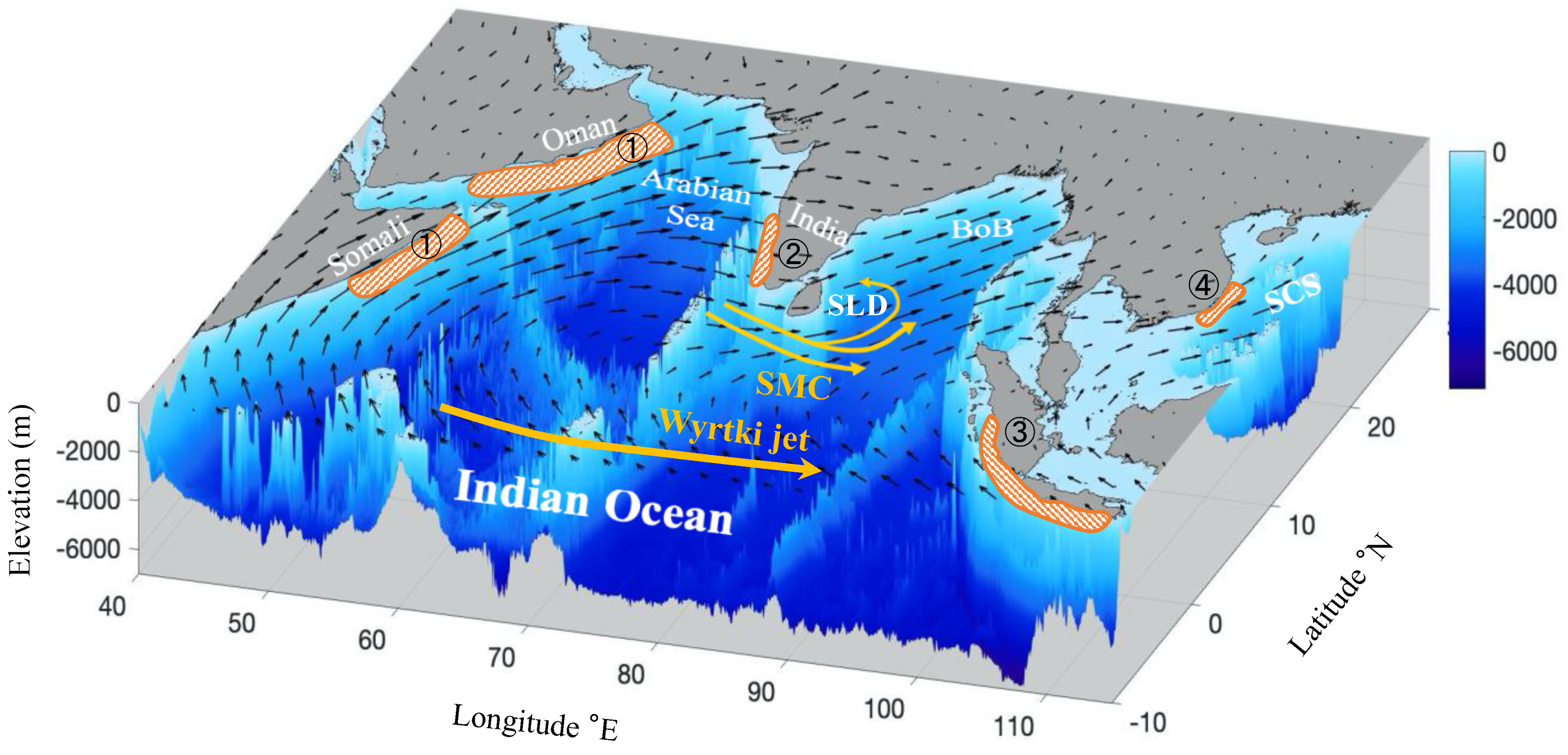
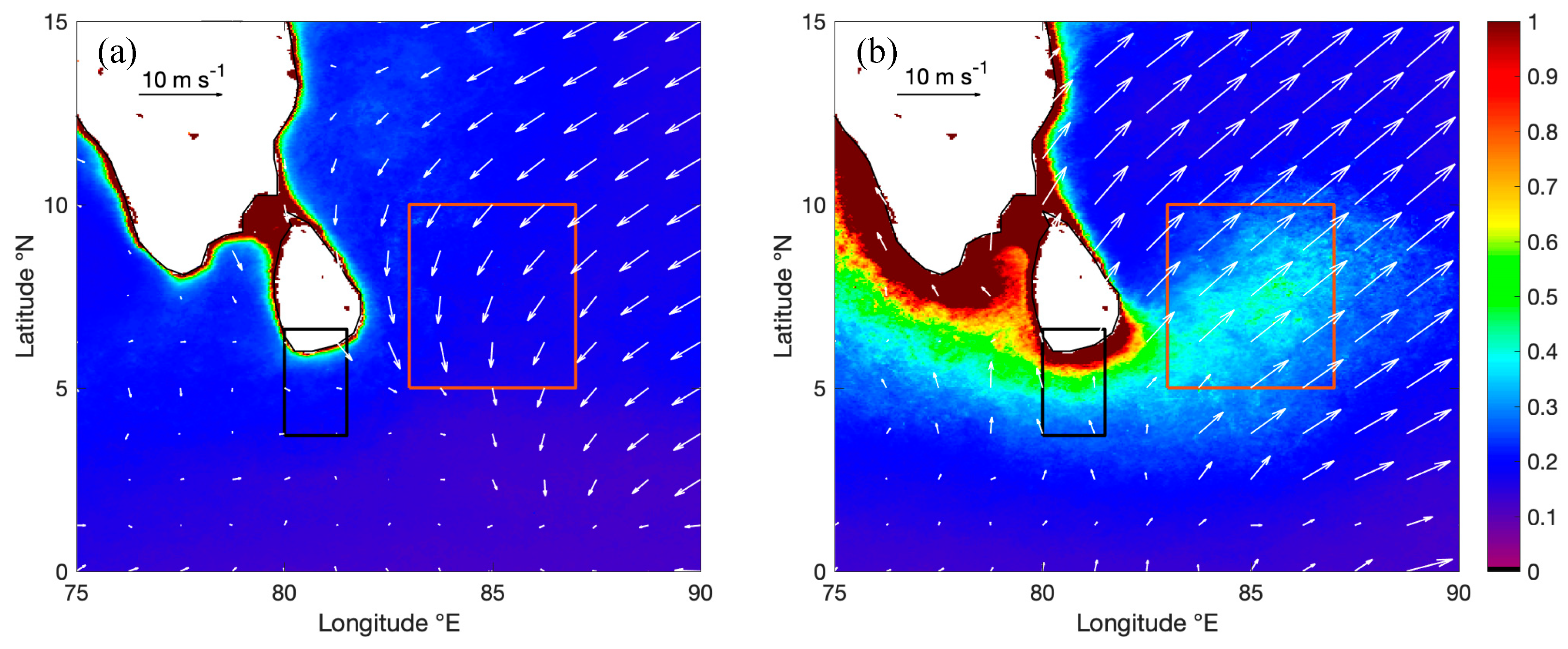
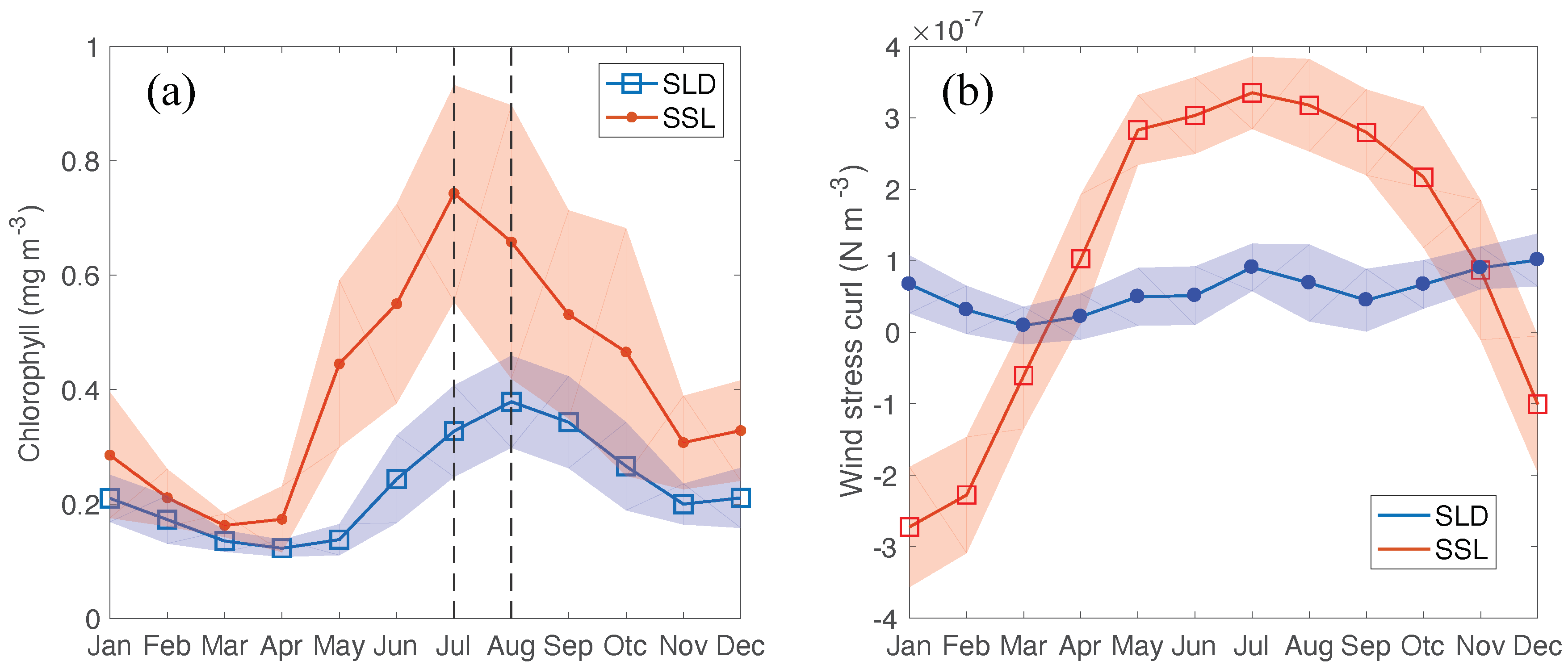


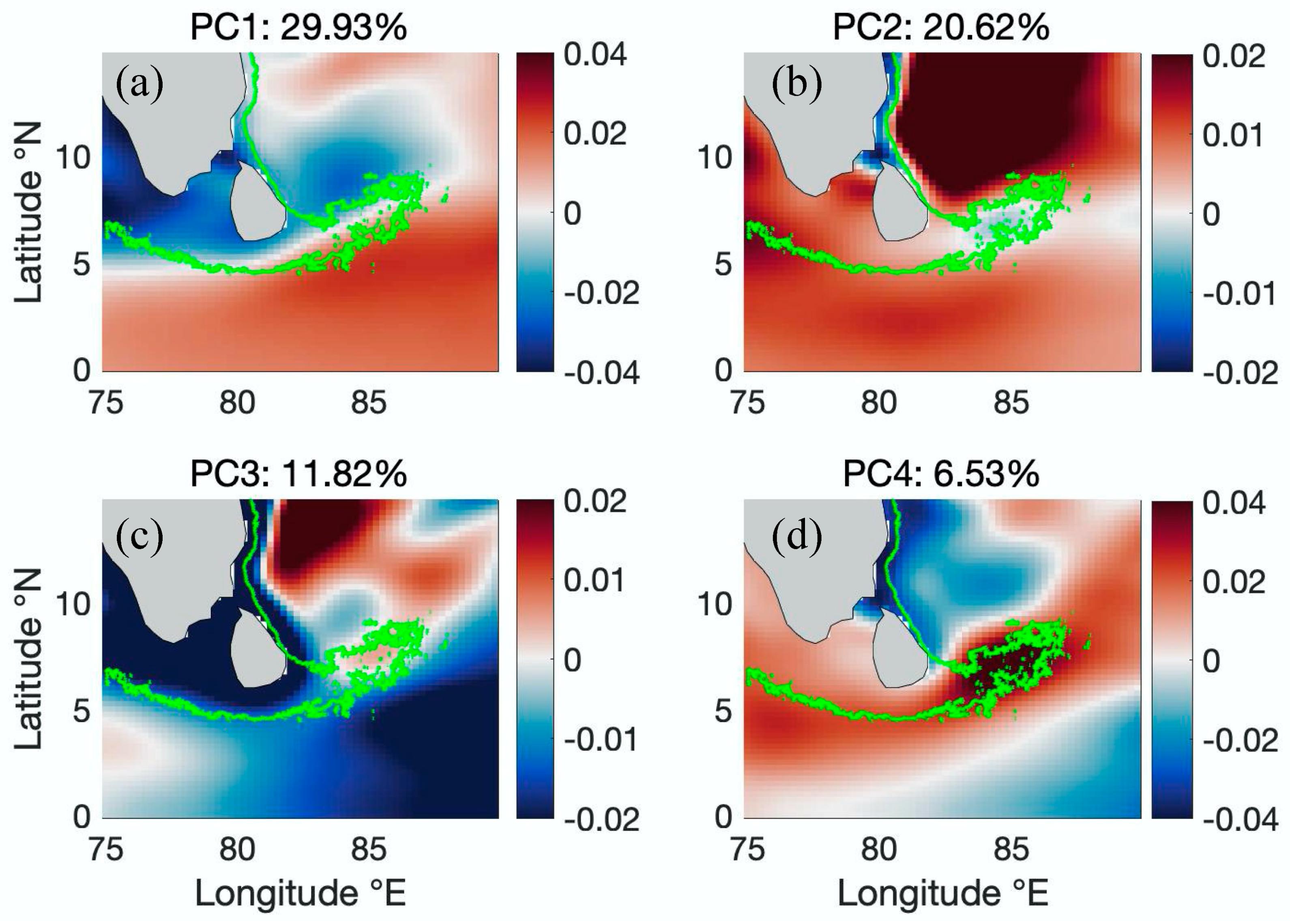
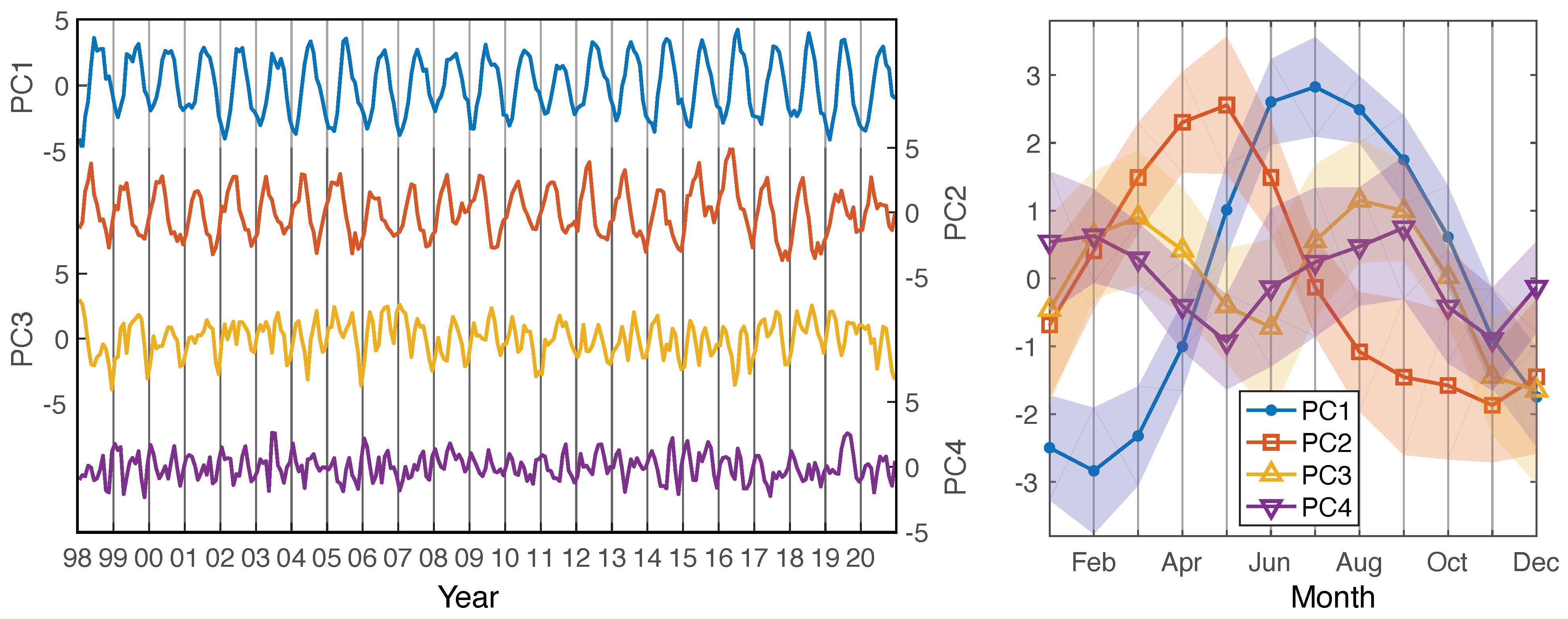
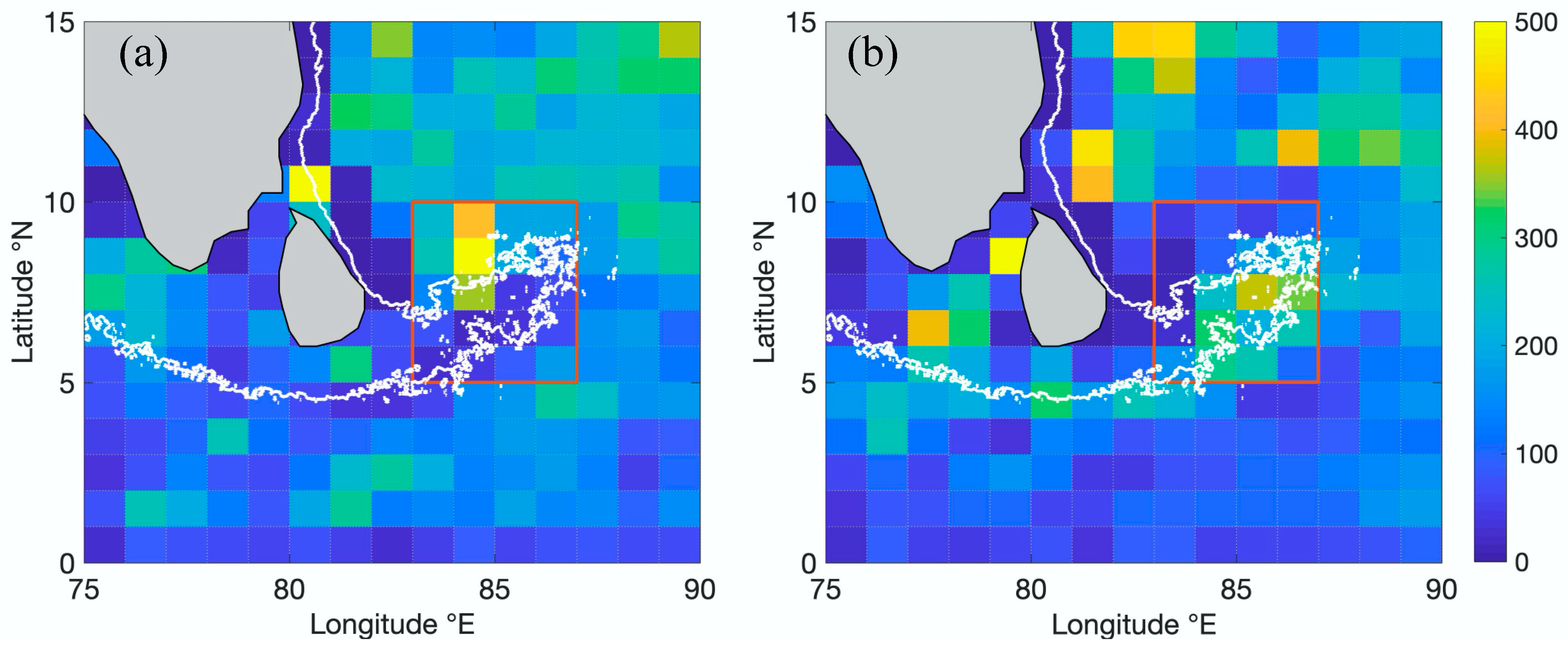

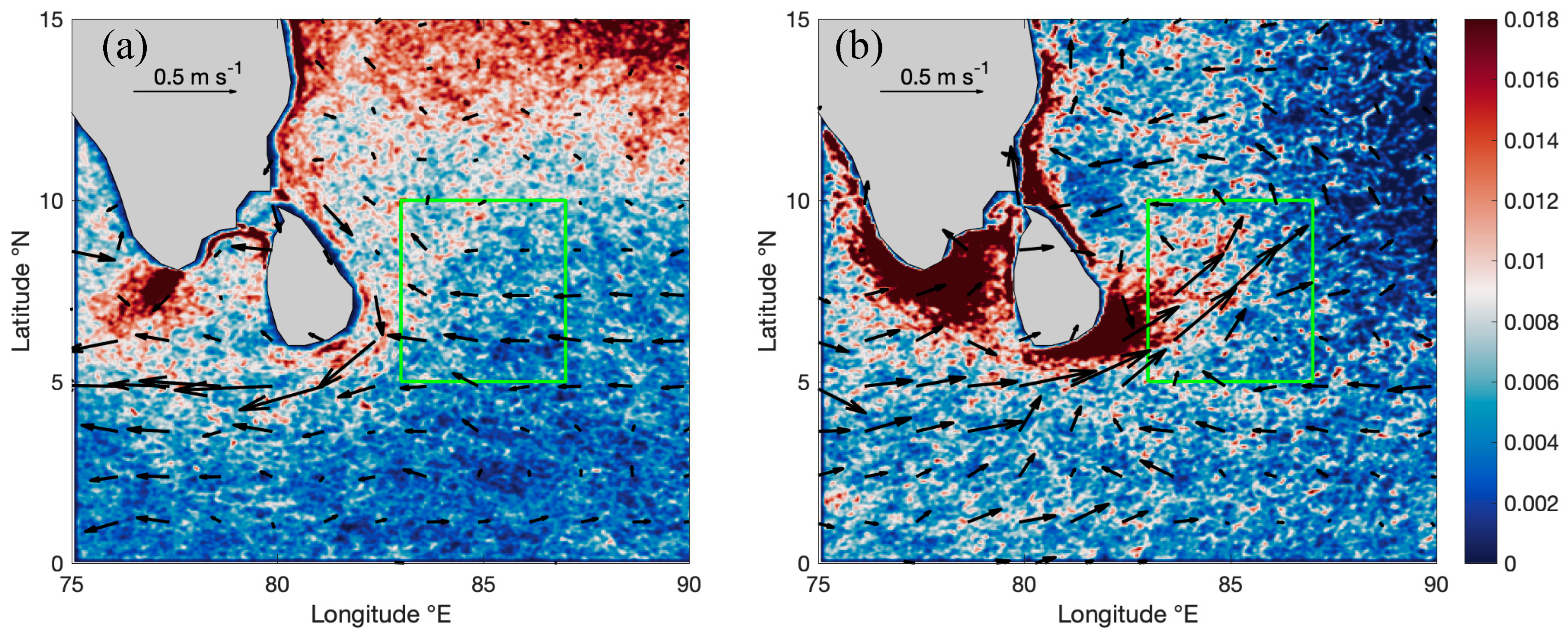
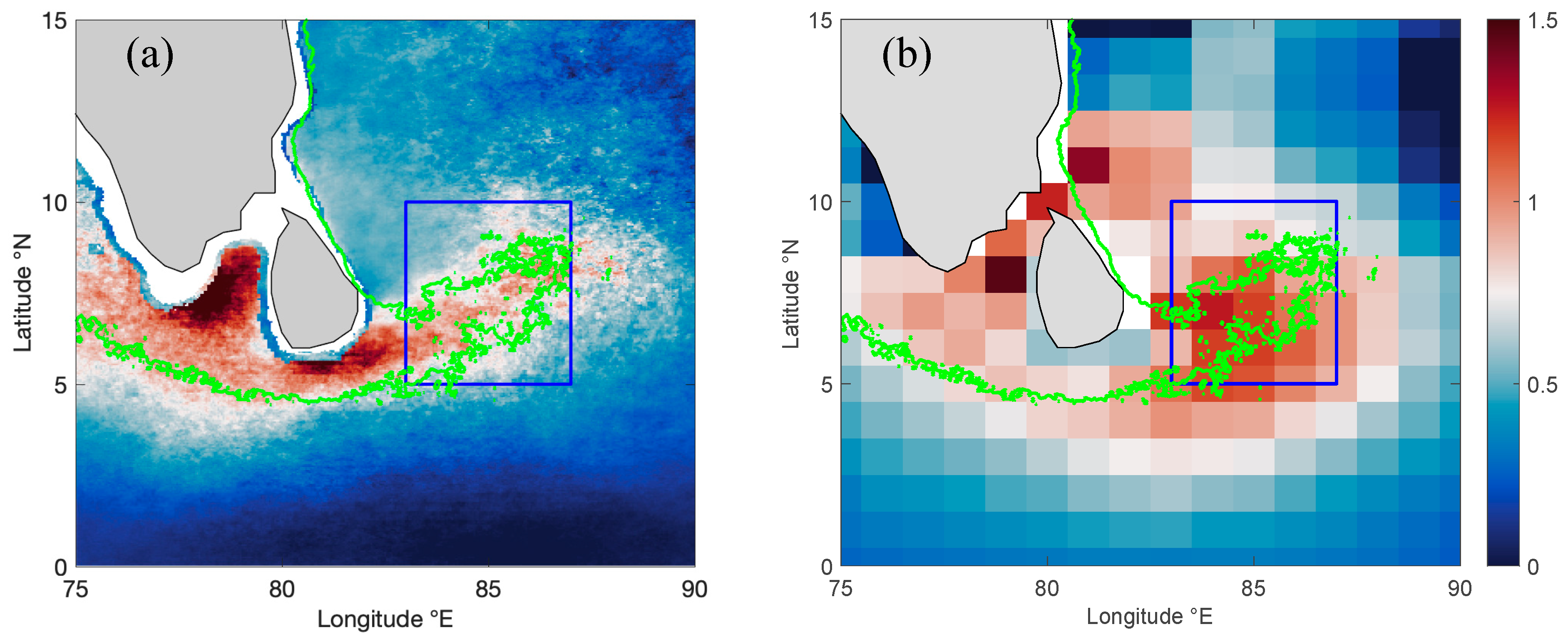
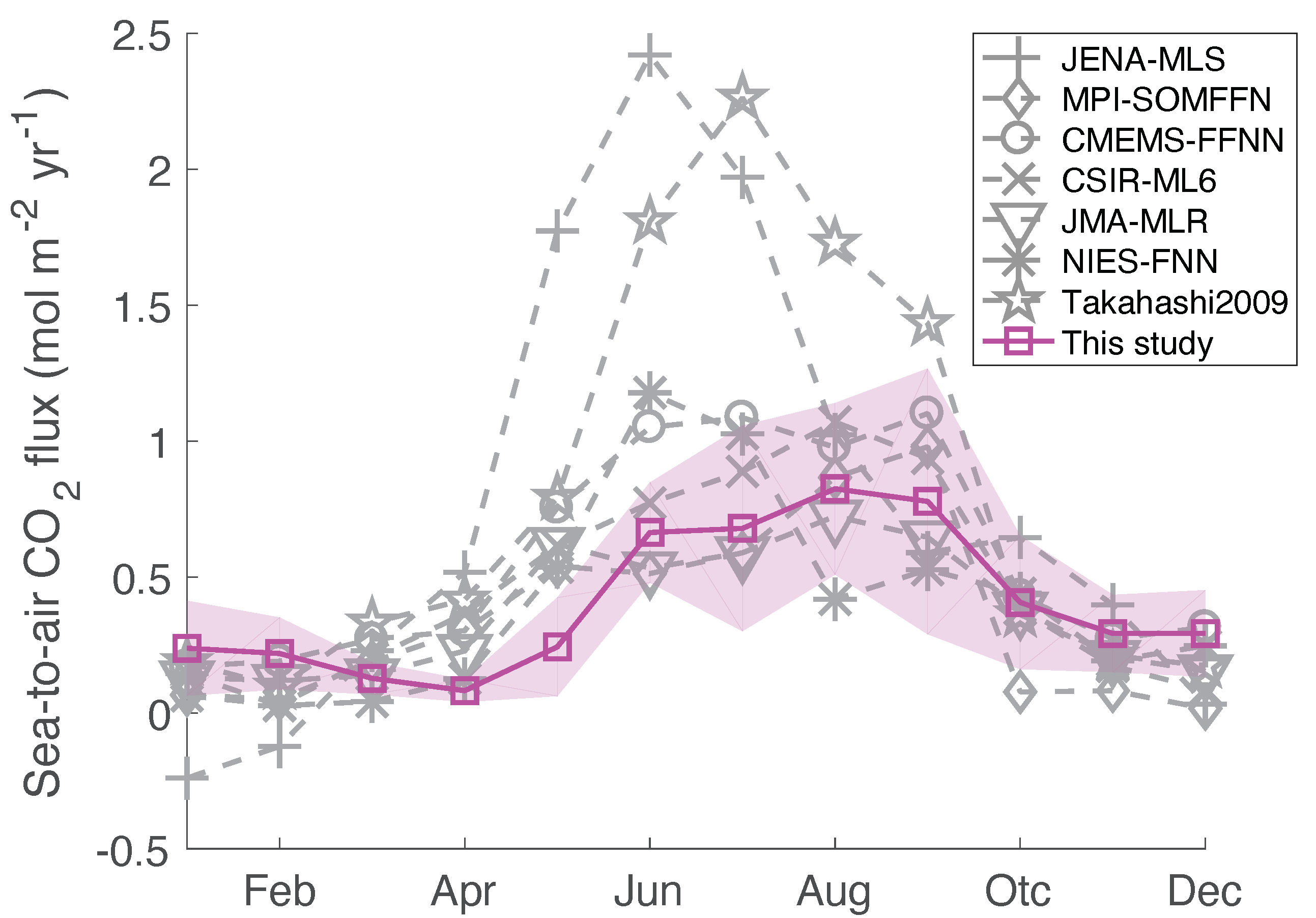
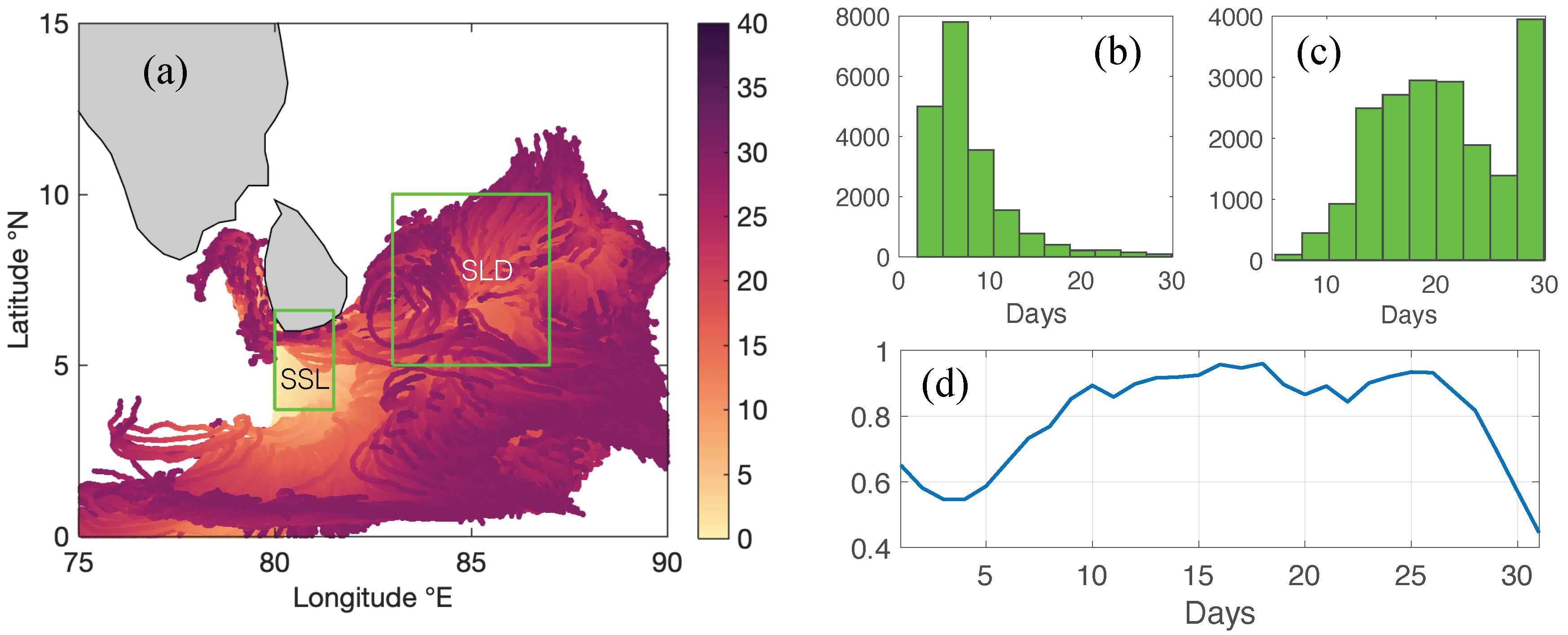
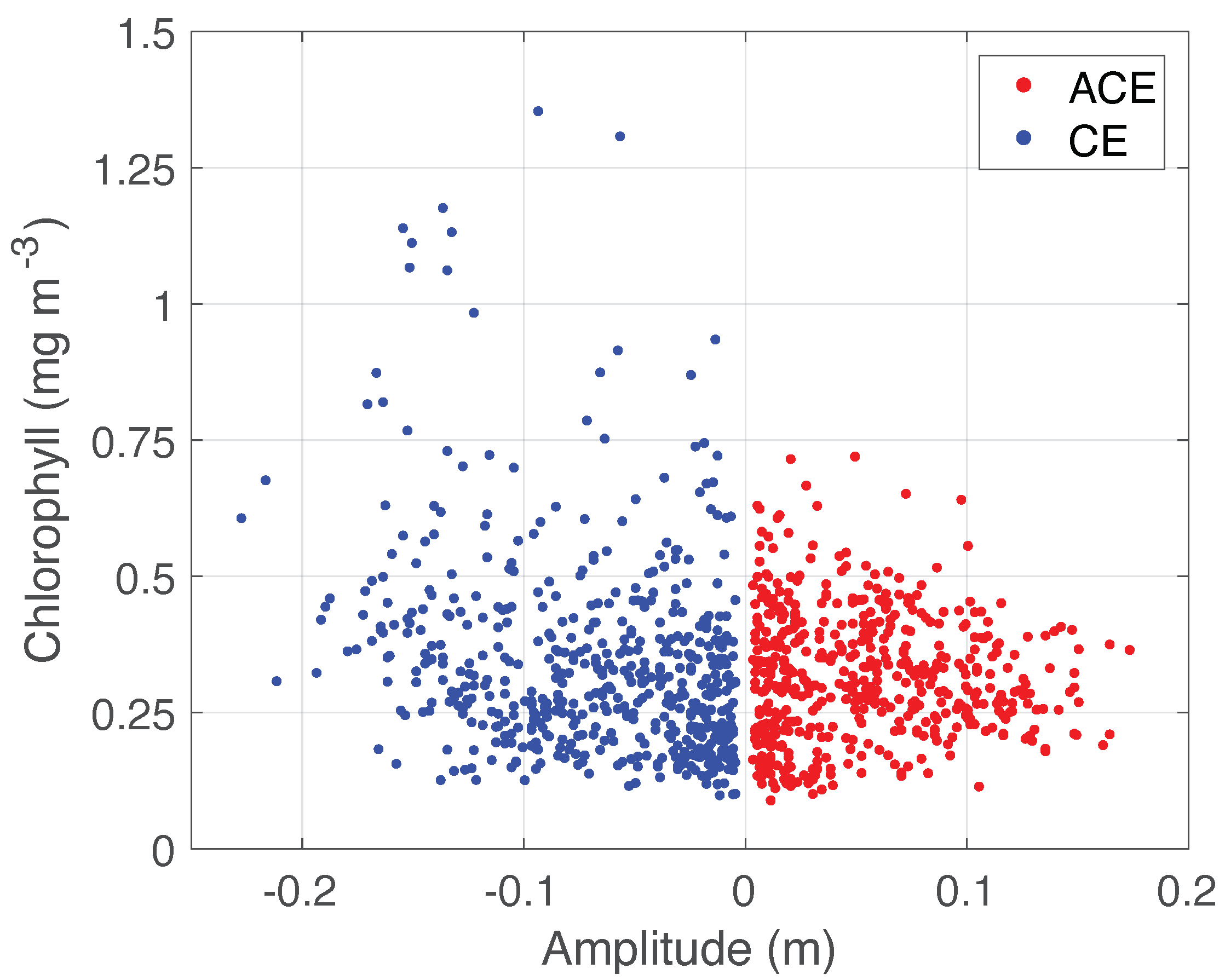
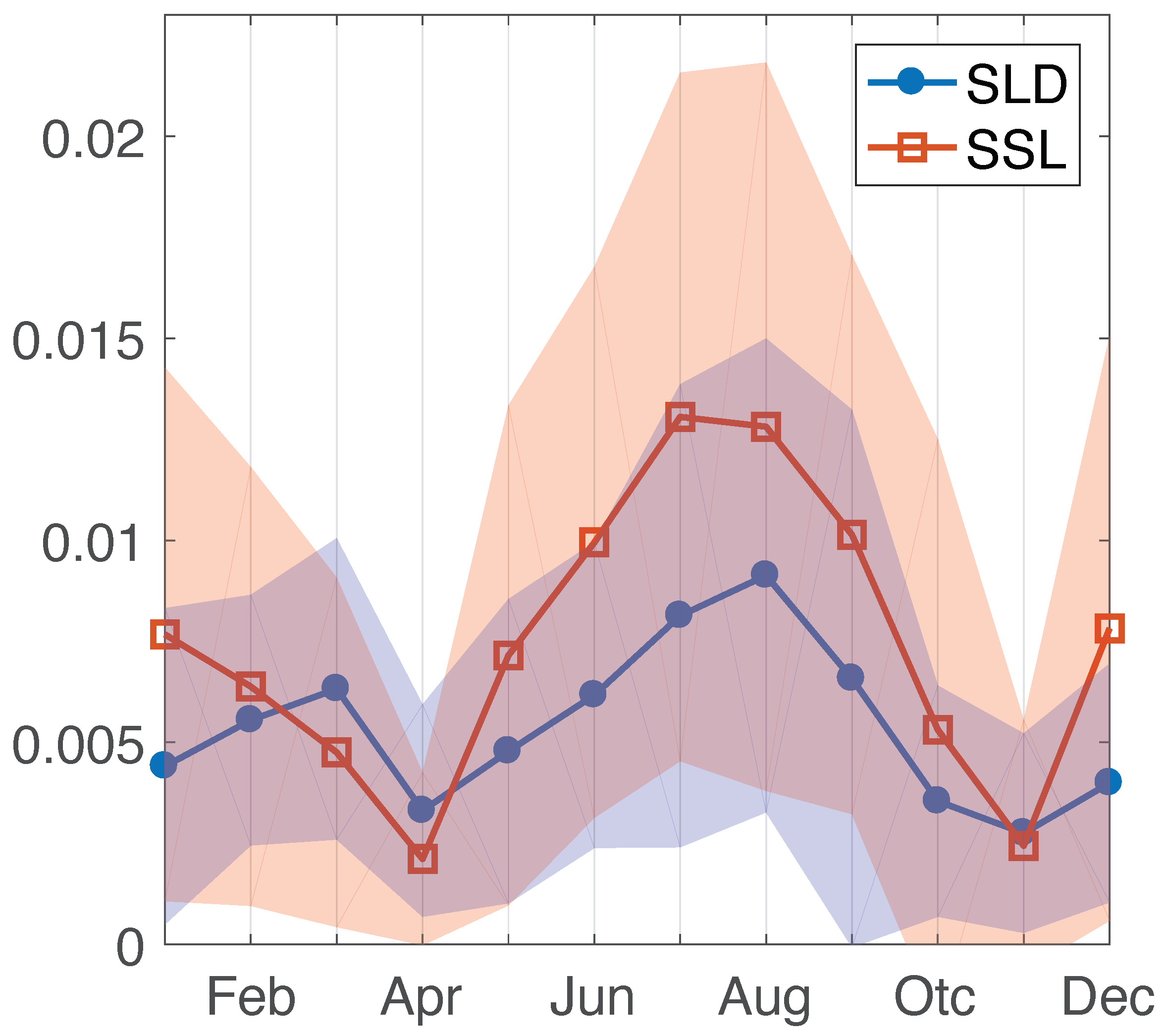
| Variables | Source | Spatial Resolution | Time Resolution |
|---|---|---|---|
| Rrs | Ocean Color CCI | 4.5 km | Monthly |
| Chlorophyll | Ocean Color CCI | 4.5 km | Monthly |
| SST | OISSTv2.1 | 0.25° | Monthly |
| SSS | GLOBAL_REANALYSIS_PHY_001_031 | 0.083° | Monthly |
| MLD | GLOBAL_REANALYSIS_PHY_001_031 | 0.083° | Monthly |
| pCO2Air | CarbonTracker CT2019B | 3° × 2° | Monthly |
| Atm. pressure | CarbonTracker CT2019B | 3° × 2° | Monthly |
| Wind speed | WIND_GLO_WIND_L4_REP_OBSERVATIONS_012_006 | 0.25° | Monthly |
| pCO2Seawater | This study | 4.5 km | Monthly |
Publisher’s Note: MDPI stays neutral with regard to jurisdictional claims in published maps and institutional affiliations. |
© 2022 by the authors. Licensee MDPI, Basel, Switzerland. This article is an open access article distributed under the terms and conditions of the Creative Commons Attribution (CC BY) license (https://creativecommons.org/licenses/by/4.0/).
Share and Cite
Ma, W.; Wang, Y.; Bai, Y.; Ma, X.; Yu, Y.; Zhang, Z.; Xi, J. Seasonal Variability in Chlorophyll and Air-Sea CO2 Flux in the Sri Lanka Dome: Hydrodynamic Implications. Remote Sens. 2022, 14, 3239. https://doi.org/10.3390/rs14143239
Ma W, Wang Y, Bai Y, Ma X, Yu Y, Zhang Z, Xi J. Seasonal Variability in Chlorophyll and Air-Sea CO2 Flux in the Sri Lanka Dome: Hydrodynamic Implications. Remote Sensing. 2022; 14(14):3239. https://doi.org/10.3390/rs14143239
Chicago/Turabian StyleMa, Wentao, Yuntao Wang, Yan Bai, Xiaolin Ma, Yi Yu, Zhiwei Zhang, and Jingyuan Xi. 2022. "Seasonal Variability in Chlorophyll and Air-Sea CO2 Flux in the Sri Lanka Dome: Hydrodynamic Implications" Remote Sensing 14, no. 14: 3239. https://doi.org/10.3390/rs14143239







